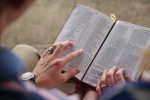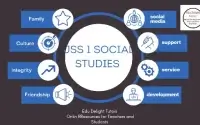Types and Uses of Drawing Instruments – Basic Technology JSS 1 Second Term
Basic Technology JSS 1 Second Term Lesson Notes – Week 4
Drawing Instruments and Materials (I): Types and Uses
Subject: Basic Technology
Class: JSS 1
Term: Second Term
Week: 4
Age: 10 – 12 years
Duration: 40 minutes
Behavioral Objectives
By the end of the lesson, students should be able to:
- Identify different types of drawing instruments and materials.
- Explain the uses of various drawing instruments and materials.
- Describe the importance of using the correct instruments for technical drawing.
- Demonstrate the proper handling and maintenance of drawing instruments.
Keywords
- Drawing Instruments – Tools used for making accurate drawings.
- Set Square – A triangular tool for drawing straight and angled lines.
- Compass – A tool used to draw circles and arcs.
- Protractor – A semi-circular instrument used to measure angles.
- T-square – A tool for drawing horizontal and vertical lines.
- Eraser – A tool used to remove pencil marks.
Set Induction (Entry Behavior)
- The teacher displays various drawing instruments and asks students to identify the ones they have seen before.
- The teacher asks students about their experiences in drawing and the materials they use.
Learning Resources and Materials
- Real samples of drawing instruments such as T-square, compass, set squares, and protractor.
- Drawing sheets, pencils, and erasers.
Building Background/Connection to Prior Knowledge
Students have used pencils, rulers, and erasers for freehand drawing. In this lesson, they will learn about technical drawing instruments and their uses.
Embedded Core Skills
- Critical Thinking – Choosing the right instrument for technical drawings.
- Collaboration – Group work on drawing exercises.
- Communication – Explaining the function of each instrument.
Lesson Content
1. Meaning of Drawing Instruments and Materials
Drawing instruments and materials are tools used in technical drawing to create accurate and neat drawings. They help in designing and sketching objects with precision.
2. Types and Uses of Drawing Instruments and Materials
| Instrument/Material | Uses |
|---|---|
| T-square | Used for drawing horizontal and vertical lines. |
| Set Squares (45° and 60°/30°) | Used for drawing angled and perpendicular lines. |
| Compass | Used for drawing circles and arcs. |
| Protractor | Used for measuring and drawing angles. |
| Drawing Board | Provides a flat surface for drawing. |
| Ruler | Used for measuring and drawing straight lines. |
| Eraser | Used to remove pencil marks. |
| Pencil (HB, 2H, H, B) | Used for sketching and technical drawings. |
| French Curve | Used for drawing smooth curved lines. |
| Dividers | Used to transfer measurements from one part of a drawing to another. |
Evaluation (Fill in the Blanks with Multiple-Choice Options)
- A T-square is used for drawing _______ lines.
a) Angled
b) Horizontal and vertical
c) Curved
d) Wavy - The tool used to draw circles is the _______.
a) Ruler
b) Compass
c) Set square
d) Protractor - A protractor is used to measure _______.
a) Lines
b) Circles
c) Angles
d) Length - A set square is used for drawing _______.
a) Horizontal lines
b) Angled and perpendicular lines
c) Circles
d) Rough sketches - The tool used to transfer measurements in drawings is the _______.
a) Compass
b) Divider
c) French curve
d) Eraser - A ruler is mainly used for _______.
a) Measuring and drawing straight lines
b) Measuring circles
c) Drawing freehand sketches
d) Erasing mistakes - The material that provides a smooth surface for drawing is the _______.
a) Set square
b) Drawing board
c) Protractor
d) Eraser - The best tool for drawing curved lines is the _______.
a) Compass
b) French curve
c) T-square
d) Ruler - The tool used to erase pencil marks is the _______.
a) Ruler
b) Eraser
c) Compass
d) Pencil - The hardness of a pencil is indicated by _______.
a) Its color
b) The number on it
c) Its length
d) The type of eraser used with it
Class Activity Discussion (FAQs and Answers)
- What is the importance of using a T-square in technical drawing?
- It helps in drawing straight and precise horizontal and vertical lines.
- Why do we use a protractor in technical drawing?
- It is used to measure and draw angles accurately.
- How does a compass help in drawing?
- It is used to draw circles and arcs of different sizes.
- What is the function of a set square?
- It is used to draw angles and perpendicular lines.
- Why do we need a drawing board?
- It provides a smooth and stable surface for drawing.
- What is the difference between a compass and a divider?
- A compass is used for drawing circles, while a divider is used for transferring measurements.
- Why do we use French curves in drawing?
- They help in drawing smooth, curved lines.
- What types of pencils are used in technical drawing?
- HB, H, 2H (for light lines) and B (for darker lines).
- Why is an eraser important in drawing?
- It helps to remove mistakes and improve neatness.
- What is the role of a ruler in drawing?
- It is used for measuring and drawing straight lines.
Presentation Structure
- Introduction: The teacher displays different drawing instruments and materials.
- Discussion: The teacher explains their uses with demonstrations.
- Student Participation: Students practice using the instruments.
- Correction & Explanation: The teacher corrects mistakes and reinforces key points.
Assessment (Short-Answer Questions)
- What is a T-square used for?
- Mention three drawing instruments used for measuring.
- What instrument is used to draw circles?
- Why is a set square important in drawing?
- Name two materials used for drawing curved lines.
- What is the use of a drawing board?
- Differentiate between a compass and a divider.
- Which instrument is used to remove pencil marks?
- Name two types of pencils used in technical drawing.
- How does a ruler help in drawing?
Conclusion
The teacher marks students’ work, provides feedback, and reinforces the correct use of drawing instruments.
Building Materials and Their Uses – Basic Technology JSS 1 Second Term
Related
Related posts:
- Lettering and Numerals in Technical Drawing – Basic Technology JSS 1
- Types of Buildings and Building Materials: Meaning and Types – Basic Technology JSS 1
- Building Materials and Their Uses – Basic Technology JSS 1 Second Term
- Board Practice Techniques in Technical Drawing – Basic Technology JSS 1
- Basic Technology JSS 1 Second Term Lesson Notes Weekly Topics
Related Posts

Understanding Entrepreneurship: Meaning, Benefits, and Types

Call to Service Christian Religious Studies JSS 1 Second Term Lesson Notes

1st Term Examination Questions Social Studies JSS 1 First Term Lesson Notes Week 12
About The Author
Edu Delight Tutors
Am a dedicated educator with a passion for learning and a keen interest in technology. I believe that technology can revolutionize education and am committed to creating an online hub of knowledge, inspiration, and growth for both educators and students. Welcome to Edu Delight Tutors, where learning knows no boundaries.